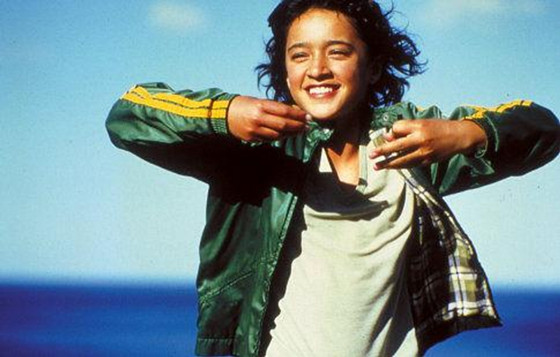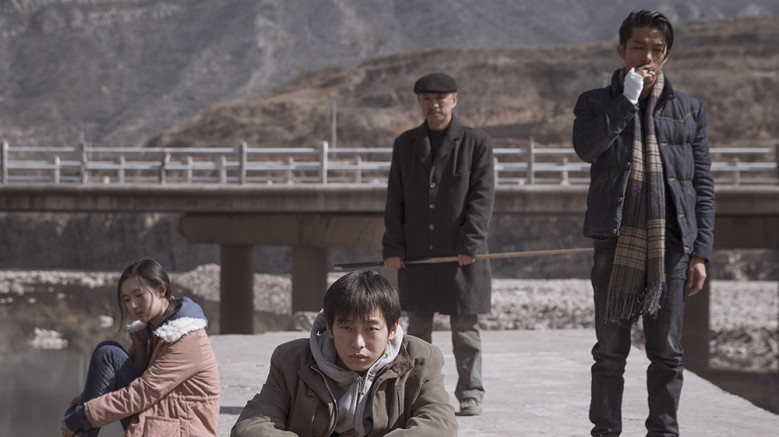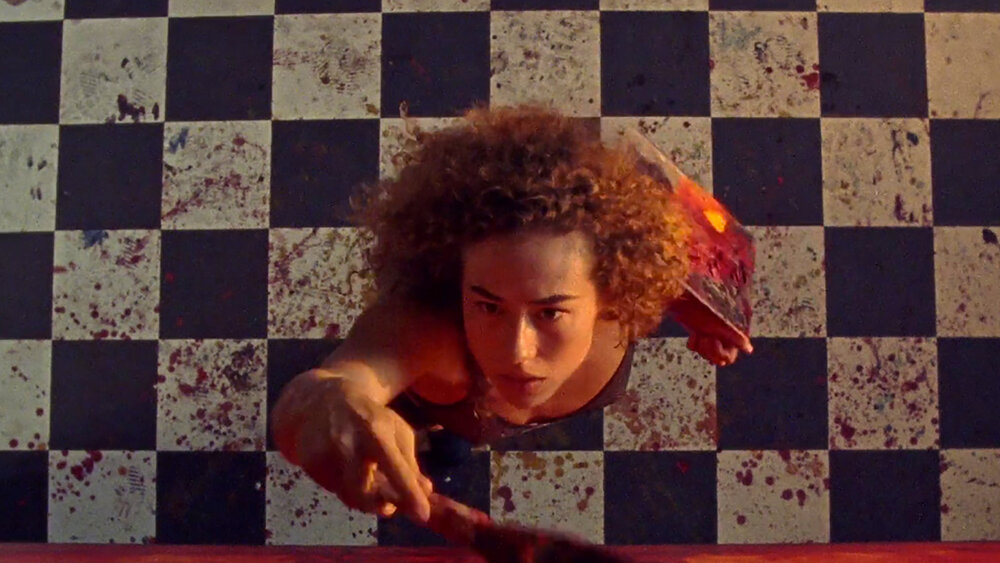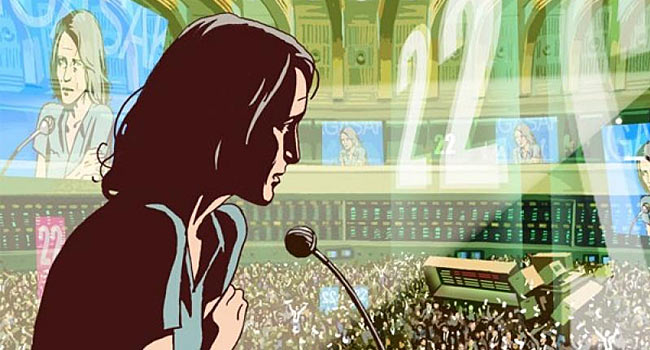6. Whale Rider (2002)

Niki Caro’s New Zealand-shot drama starring Keisha Castle-Hughes finds beauty in its authenticity. Whale Rider is based on the novel of the same name by New Zealand author Witi Ihimaera, and is staunchly loyal to the descriptors and setting of the novel. The film’s location is central to the loyalty the film displays to its source material. Numerous descriptions of the whale-shaped island, the houses, and the serene views of the water are employed in the visual mechanics of the film.
Framing is used as a means of displaying the internal turmoil of the main character, Pai, played by Keisha Castle-Hughes; frequent close-ups of the young actor’s face give time and space for raw emotion to gain depth and to unfold on screen. Whale Rider is also color graded meticulously, showing deep navy blues and aquamarines with intentional care as an homage to the setting. The contrast of the land and sky in shots is juxtaposed with more homogenous blues in underwater scenes to show the other-worldly nature of marine settings.
7. An Elephant Sitting Still (2018)

With an expansive run time of almost four hours, An Elephant Sitting Still is a film that follows four main protagonists whose lives are inexplicably intertwined by fate over the course of a day. Widely described as pervasively dark, depressing, and lonely, the film uses its cinematic style to this end. The gray/blue color grading of the film envelops the viewer in an inescapable coldness, while frequent use of silhouettes give characters a detached essence. The use of silhouettes gives the impression of characters as shadows of themselves, drifting through an unrelenting series of hardship.
The shots are often close, giving little room between audience and character, and bringing the destitute emotional sense of the characters to the foreground. Characters and camera alike move slowly, and along with the longer-than-usual runtime of the film, support a slow and meandering realism that leaves little escape from the dreary realities of the film.
8. Bliss (2019)

Bliss is a neon-hued, fast-paced, drug-fueled surreal nightmare of a film. Following Dezzy, played by Dora Madison Burge, and her descent into madness after taking a hallucinogenic drug called bliss to help her revamp her creative painting capabilities, the movie is a non-stop onslaught of blood, heavy music, and of course, paint. The most notable feature of the film is its color. Director Joe Begos pulled no punches when deploying the purples, magentas, reds, pinks, and violets. As Dezzy becomes more and more untethered from reality, the movie situates itself more solidly in the stretches of the color wheel that fall between warm and cool, a relatively unique and jarring color palette for those used to the utilization of staunch cool blues and warm oranges.
This interacts intimately with the textural palette of the film as well; gushing blood, wet paint, and glistening skin are cornerstones of the film’s gripping spectacle. Tying these together is the bold lighting, which throws these aspects into relief with its astringent and dark composition.
9. Encounters at the End of the World (2007)

Documentarian Werner Herzog brings his unique lens to Antarctica in Encounters at the End of the World. While interviews with people who live and work in Antarctica are central to the work, Herzog and cinematographer Peter Zeitlinger do not waste any shots of the breathtaking stretches of Antarctica landscape. People are shown as specks against the miles and miles of frozen landscape, achieving an often difficult feat in filmmaking – successfully showing the vastness of the wilderness on screen.
Herzog and Zeitlinger also bring their expertise below the surface, using underwater footage to show a world entirely unknown to most human beings. Silhouettes set against water-diluted light evokes an eerie and ethereal atmosphere, without need for a chilling narrative. The use of lighting, landscapes and natural light is almost, in and of itself, a narrative.
10. The Congress (2013)

The Congress is a 2013 Ari Folman film starring Robin Wright as a fictionalized version of herself who sells her likeness to a production company in exchange for a contract agreement that she will never act again. The film takes on the topics of commodification of people and the role technology might play in our own obsolescence in the workforce and in art itself. Placing reality and surreality side by side, a large portion of The Congress is animated, sandwiched on either end by live action.
Significant contrast employed in color grading of the live action portion of the film, along with artificial lighting bring an unsettlingly futuristic feel to the film. The animated stretches of the film are bright, colorful, and move in a dreamlike fashion. With the animation style being uniquely non-homogenous, it situates the film in the deepest chasms of the uncanny valley, giving the viewer a sense that something is amiss. Quintessentially cartoonishly drawn characters move boldly over realistically painted clouds, giving a depth to the cinematography not always seen in animation. There is a timeless feel to the animation, with a noir-esque lighting and grain given to the more intense scenes, elevating the subject matter to become more universally applicable. Ultimately, the psychedelic animated set pieces give an even harsher coldness to the bleak palette of the real world.